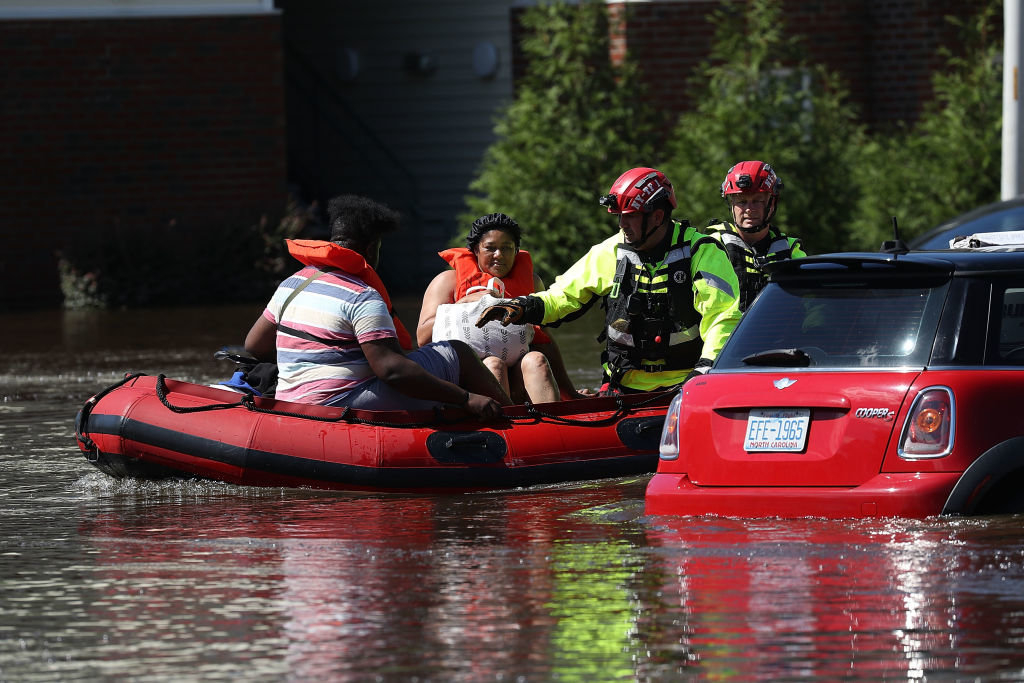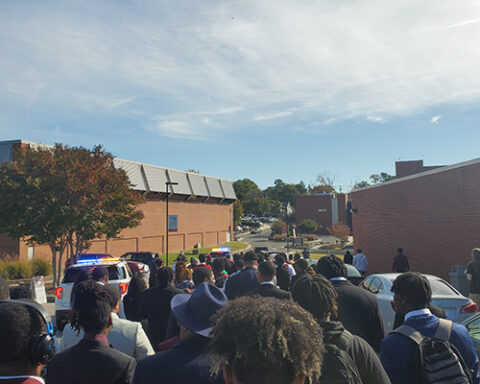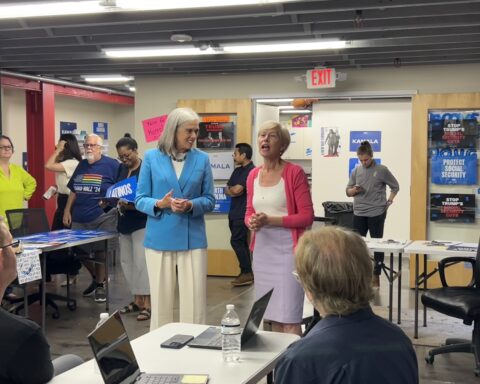The Federal Emergency Management Agency has more than enough money to assist states hit by Hurricane Florence and likely won’t need Congress to pass an emergency disaster aid bill in the coming weeks, based on figures provided to lawmakers.
Due to lawmakers’ largesse when they provided more than $136 billion in late 2017 and earlier this year — mostly to respond to Hurricanes Harvey, Maria and Irma — government disaster aid coffers are flush with cash. It’s a vastly different situation from last year, when Congress returned in September after Harvey spent five days battering Houston and surrounding areas.
Because it may take months to assess how to rebuild once Florence recedes, FEMA’s cash balance should be enough to tide over the relief effort until after the midterm elections on Nov. 6, based on obligation rates from prior-year disasters.
That’s not to say, however, that lawmakers won’t intervene sooner and provide money for other accounts, such as the Department of Housing and Urban Development’s Community Development Block Grants, which received $35.4 billion in disaster recovery funds between September and the end of March. That includes $7.4 billion as part of the first round of aid just days after Harvey hit, though it took HUD two months to allocate the first batch of funds, and nearly three additional months to provide guidelines on how affected states and territories should award the grant money.
“I’ve talked to my staff some about Florence funding needs,” Senate Appropriations Chairman Richard C. Shelby of Alabama said Monday. “If we know that there’s more than a good chance that we’re going to intervene in that like we do all disasters, and if we had some numbers and if the administration and the House would work with us, I think we could do something to get ahead of the curve a little bit.”
A potential vehicle could be the fiscal 2019 Transportation-HUD bill currently stuck in conference alongside three other spending bills. “Perhaps some disaster relief in there,” Shelby said Tuesday, though he provided no details. It’s not clear whether negotiators will resolve differences on that package before the post-election lame-duck session.
Big balance
FEMA’s Disaster Relief Fund had $24.8 billion left in it as of Friday, and will get another $7.4 billion on Oct. 1 when the new fiscal year begins — assuming Congress adopts the continuing resolution tucked inside the conference report on the fiscal 2019 Defense and Labor-HHS-Education appropriations bills. That would mean a total of $32.2 billion available for the initial relief effort.
By contrast at the beginning of September 2017, just days after Harvey struck Texas and Louisiana, the DRF balance was about $2.7 billion and shrinking — so Congress needed to act fast.
Not so this time around, according to the administration. “The Disaster Relief Fund has sufficient resources to support the survivors and communities affected by Hurricane Florence as well as previously declared disasters including the 2017 Hurricanes,” a FEMA spokesperson said in a statement.
According to monthly reports filed with Congress, FEMA obligated nearly $18 billion during the three-month period spanning September through November last year, and that was in response to three major hurricanes as well as prior-year disasters and wildfires that blazed across thousands of miles in California and other western states.
That was possible because Congress approved an emergency $7.4 billion cash infusion for the DRF, signed into law Sept. 8, while another $7.3 billion freed up on Oct. 1 under the same measure. Lawmakers followed up with another $18.7 billion for FEMA in late October. Finally, an additional $23.5 billion in emergency funds for FEMA became law as part of the February deal lifting discretionary spending caps for fiscal 2018 and 2019.
The National Flood Insurance Program is also in much better shape than it was last year, when as part of the second hurricane relief supplemental in October Congress had to wipe out $16 billion in the program’s debt in order for it to be able to keep paying claims. At the end of September 2017, the NFIP only had the capacity to pay out $6.1 billion in claims and didn’t have any ability to borrow more because it had reached its $30.4 billion debt limit.
As of March 31, the program had the ability to pay out between $15.4 billion and $16.9 billion in new claims, depending on losses, according to FEMA. By Dec. 31, 2017, the agency had paid out a total of $11.9 billion in flood insurance claims due to the combined impact of Harvey, Irma and Maria, by comparison.
“We have plussed up the FEMA accounts, so right now FEMA has money in the pipeline. So I think we’re better prepared on the front end of this,” House Speaker Paul D. Ryan said Sept. 13. However Ryan conceded that the unexpected was still possible.
“You never know what’s going to be needed until you’ve gone through the disasters. Is it in the realm of the possibility that we’re going to have a supplemental? Of course it is,” Ryan said at his weekly press conference.
Story by Jennifer Shutt with contributions from David Lerman and Lindsey McPherson
CQ Roll Call (Tribune News Service)


















